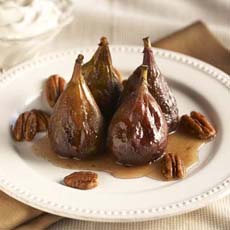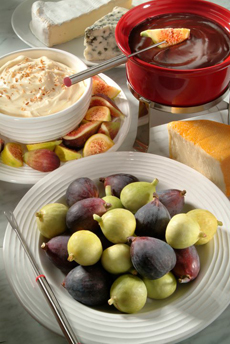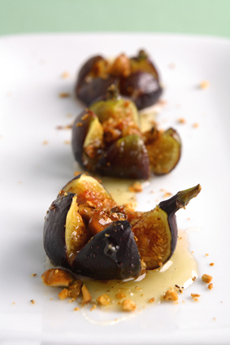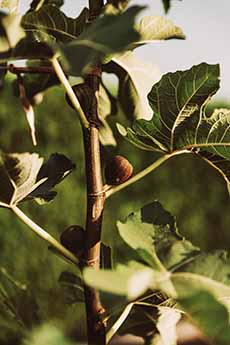Types Of Figs, History Of Figs: Have Some Figs For National Fig Week
 [1] Honey-roasted figs are a delicious dessert. You can serve them with goat cheese or mascarpone (photo © Melissa’s).
|
Figs are such a delicious fruit; but how often do you eat them? For inspiration, we have a delicious fig dessert recipe below, as well as the different types of figs and the history of figs. The first week in November is a good excuse to have your fill: It’s National Fig Week. YOU CAN SERVE FIGS AT EVERY MEAL Buy whatever is plumpest and most visually appealing. Or, buy as many varieties as you can find, and have a comparison tasting. In the U.S., commonly-found varieties include: Wild figs have grown in Africa, the Mediterranean, West Asia, and South Asia beginning around 100 million years ago, during the time of the dinosaurs. Many primates eat wild figs, and the first humans ate them as well. They discovered that figs could be dried and stored as winter staples. |
|
|
By about 11,000 years ago, people in West Asia had begun to farm fig trees. Farmed figs may be the first kind of food that anybody farmed, even before wheat and barley (the other contender is dates). In hot climates, fig trees produce two crops every year. The leaves of the fig tree are also edible. |
||
|
RECIPE: ROAST FIGS WITH PECANS & HONEY
This variation of classic roasted figs was created by Chef Ida Rodriguez of Melissa’s Special Produce. Serve it with a glass of muscat or other dessert wine. 1. PREHEAT the oven to 400°F, setting a rack in the center. Coat a shallow baking dish with the butter and place figs in it, stem up. Sprinkle with 4 tablespoons of the sugar and add the wine. 2. BAKE in a preheated oven for 20 minutes, basting occasionally. 3. ADD the pecans and sprinkle them with the remaining tablespoon of sugar. Lower oven temperature to 300°F and bake 6 to 8 minutes longer. 4. TRANSFER the figs and pecans carefully to a serving dish. Add the honey to the cooking juices, and cook over low heat to blend. Spoon the syrup over figs and sprinkle with lemon juice and pepper. 5. SET aside to cool and then refrigerate. Serve cold with crème fraîche. |
|
|
|
|
||




